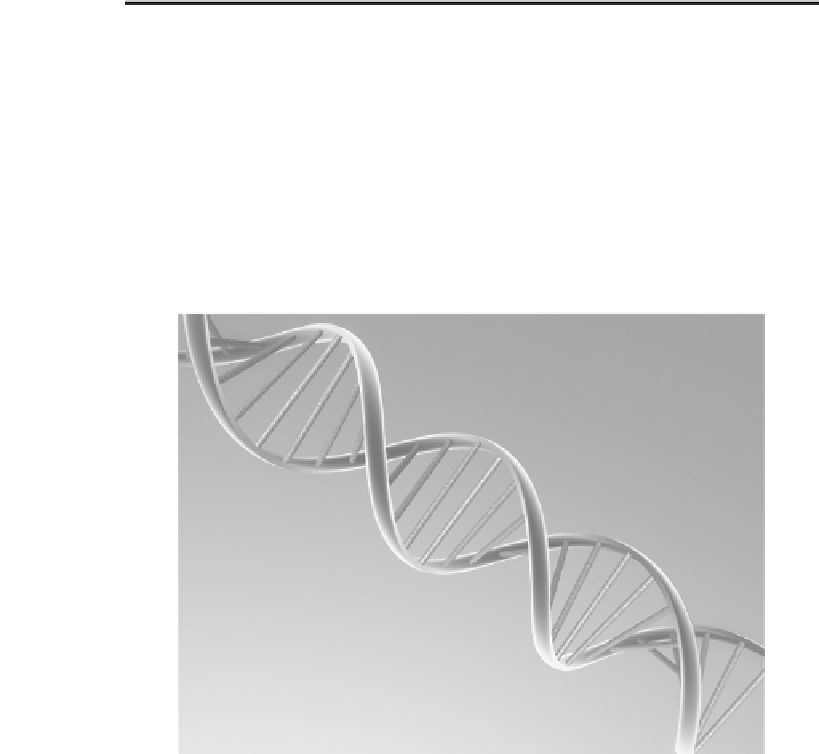Geoscience Reference
In-Depth Information
of any cell had the ability to 'programme' a new and complete organism in
its likeness.
Study Task:
I argued in
Chapter 1
that 'gene' is one of nature's collateral
concepts. When you think of this word, which of the four main meanings
of nature come to mind? Can you think of concrete examples where a state-
ment about genes illustrates the meaning(s) at work? The statements could
be everyday ones, not necessarily ones made by scientists.
It's a measure of just how visible molecular biology now is in the pub-
lic realm that its lingua franca has permeated popular discourse, almost
to the point of becoming normalised. Few people are unaware, though
fewer still are conscious, of the complex semantic work performed by
the image of the double helix (see
Plate 4.3
). Terms like 'gene therapy',
'genetic database', 'genetic counselling', 'transgenic organism', 'genetic test-
ing', 'genetic screening', 'DNA fingerprinting', 'gene patent' and 'genetic
disease' are now commonplace outside the specialised epistemic commu-
nities who coined them. This is because they refer to things that have been
What comes to mind when you see a picture of DNA? Increasingly, the 'twisted ladder' image of a
gene has come to represent 'life' in general because it is perceived as
the
building block or elemental
component. It signifies the biological unity of humankind, as well as the power of biological pro-
cesses over human wishes and desires. It reminds us that we're all animals (whatever else we think
we are), and it raises questions about group-level differences among humans (we may be genetically
similar, but are we all identical?).


